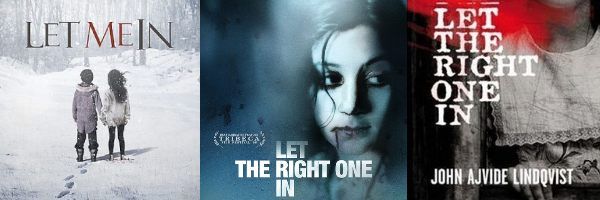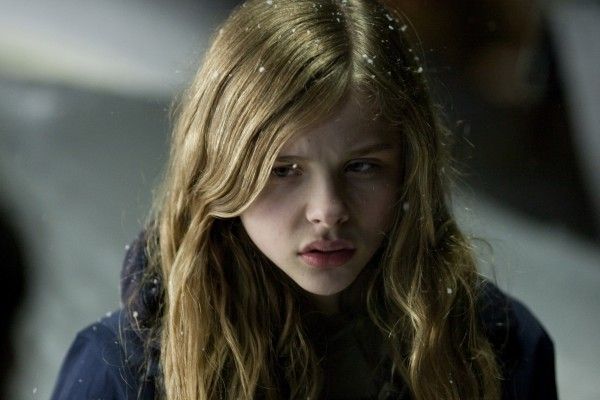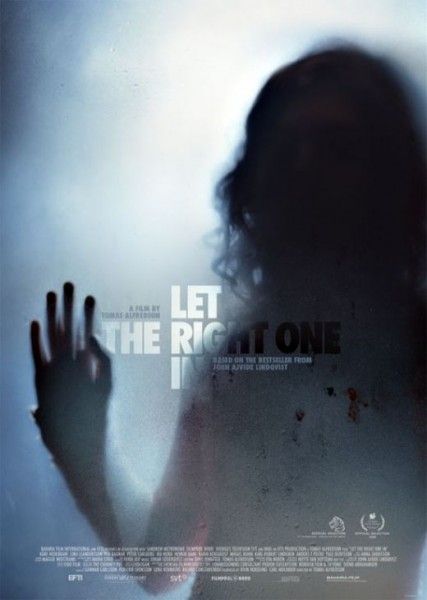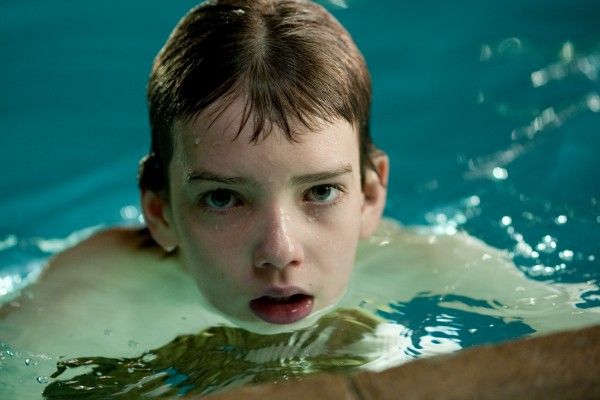So, let’s have some fun. If you have seen the original Swedish vampire film Let The Right One In by Tomas Alfredson, read the original novel by John Ajvide Lindqvist, and saw Matt Reeves’ Let Me In this week, this is the place for you. I figured one thing that is missing from reviews (for good reason) is a thorough explanation of the differences between some of the different stories, so why don’t we get some discussion going? I will be throwing in my two cents in the comments as well, so, this is your final warning if you don’t want to be spoiled about the two films and the novel that inspired them both. After the jump I will break down some key difference between all three, and I am counting on you to take this and run with it.
So, this will be quick and dirty to hopefully foster a more thorough discussion in the comments. So, let’s just right into the differences and similarities:
*Again, this is your final warning. If you haven’t seen the Swedish film, read the book, and seen Let Me In, there are some huge spoilers after the image below.*
"THE FATHER"
”The Father” in Let Me In is not given an ambiguous history. There is an implication in the Swedish film that this isn’t the purest of relationships, but that is as far as it goes. Meanwhile, in the book, Hakan is clearly a pedophile and Eli has come to get him out of the ruined state he was in and to set him up as a protector, but there is a constant battle of how much touching Hakan is allowed. Perhaps he has slept with Eli, but it’s never clearly mentioned in their normal relationship. Of course, when Hakan returns as a monster, he clearly penetrates Eli, which seems like a cruel twist of fate. In Let Me In, the father figure is clearly shown as having grown up with Abby. This takes the edge off of their relationship, but sets up a unique outlook on Abby and how her relationship with Owen will end up. I think in the context of the American film, while not as dark, there is an eerie quality to that relationship and what the future holds for Owen. Is this a love story for Abby, or just moving onto the next protector? And why didn’t Alfredson’s version go as far as the novel?
ELI/ABBY
Obviously, in the Swedish film, there is a shot of Eli’s private area that hints at the ambiguity of the character’s gender identity. Some have said that it’s clear that Eli is a boy because of how that area is sewn up, but I didn’t exactly stare at the area so I will leave that up to yall to argue about. Meanwhile, the gender ambiguity in Let Me In is barely hinted at. In the novel, there are graphic details about how Eli was castrated at an early age and the novel forces this new gender identity on the reader by referring to him as a “he” instead of a “she” towards the end.
The narrative in Let Me In was clearly compressed. So was this a sacrifice to keep the length short and focus on the relationship between Abby and Owen, or do you think Reeves backed off to stay away from the controversial aspect of a neutered vampire? Also, does this work in terms of the setting that Reeves has established? Do you prefer the ambiguity of Alfredson’s film, the clear distinction of the book, or the way Reeves handles it?
OWEN/OSKAR
In the Swedish film, Oskar’s home life isn’t great, but his mom isn’t a raging alcoholic like in Reeves’ film. In fact, Owen is incredibly secluded in Let Me In, so much so that his only friend is the gym teacher. In the novel, he has the gym teacher, a friend at school, the policeman at times, Tommy, and his mother and father to a certain extent. Meanwhile, in the Swedish film, he has a good relationship with the gym teacher, and his mom acts like a mom, if overly concerned. He has a good time with his father when he isn’t drinking as well. In other words, he has confidantes in a sense, or someone to talk to, although to a lesser degree than the book. In Let Me In, Abby is his one confidante. This made me feel like his only option was to be with Abby, whereas the original film and novel makes the relationship form more naturally. What do you think? Was this to reflect Reeves’ own home life, or some other reason?
VAMPING OUT
This was one of my biggest concerns from the remake. The use of CGI instead of practical effects for Abby’s transformation really bugged me. But what did you think? Did you like the vampire aesthetic Reeves went for, and the use to accentuate Abby vamping out, or did you prefer the original film’s version? Also, what about using a completely different actress as Eli’s vamped out version in the original film versus having heavy makeup and false teeth for Reeve’s version.
While there are a number of other differences between the book, original film, and the new American version, I think these are the defining characteristics between all three. Let us know what you think in the comments below and sound off on any big differences I didn’t mention.




